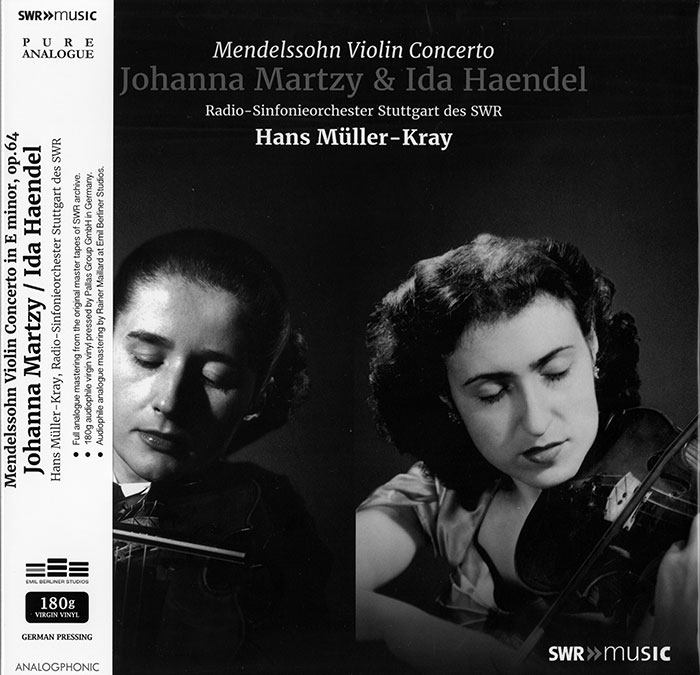Logowanie
Mikołaj - ten to ma gest!
Miles Davis, Horace Silver, Jay Jay Johnson, Percy Heath, Kenny Clarke, Lucky Thompson
Walkin'
20bit K2Super Coding - ale jak to brzmi!
Kasety magnetofonowe
Winylowy niezbędnik
ClearAudio
Double Matrix Professional - Sonic
najbardziej inteligentna i skuteczna pralka do płyt winylowych wszelkiego typu - całkowicie automatyczna
PAGANINI, Michael Rabin
Paganini Caprices
No. 2 in B minor - Moderato
No. 3 in E minor - Sostenuto
No. 4 in C minor - Maestoso
No. 5 in A minor - Agitato
No. 6 in G minor - Lento
No. 7 in A minor - (Moderato assai) Posato
No. 8 in E flat - Maestoso
No. 9 in E Major - Allegretto
No. 10 in G minor - Vivace
No. 11 in C Major - Andante
No. 12 in A flat Major - Allegro
No. 13 in B flat Major - Allegro
No. 14 in E flat Major - Moderato (Marcia)
No. 15 in E minor - Posato
No. 16 in G minor - Presto
No. 17 in E flat Major - Sostenuto
No. 18 in C Major - Corrente
No. 19 in E flat Major - Lento
No. 20 in D Major - Allegretto
No. 21 in A Major - Amoroso
No. 22 in F Major - Marcato
No. 23 in E flat Major - Posato
No. 24 in A minor - Quasi presto
- Michael Rabin - violin
- PAGANINI
Monumentalne
An absolutely stunning vintage box set featuring the great Michael Rabin on solo violin. This is a classic performance by one of the greatest violinists of the 20th century.
Not to be missed by fans of violin, Rabin, Paganini or great sound!
Includes two LPs, a box and a four-page insert.
When Michael Rabin made his official concert debut at Carnegie Hall in 1950, at the age of 14, conductor Dimitri Mitropolous said of him: "He is really the genius violinist of tomorrow, equipped with all that is necessary to be a great artist and to give great thrills to the musical world. He is a blessed boy and already completely devoted to his mission."
Rabin went on to become hailed by critics and audiences for his brilliant performances and became a major American artist before his premature death at the age of 35.
Although Paganini came into the world almost a generation too soon to be a genuine Romantic, he stands as one of the great and fascinating Romantic figures because of the extraordinary impression he made upon the younger generation of artists, as well as on a vast public. His violin-playing was of a kind that had never before been witnessed; and, besides, he presented a physical image so strange as to seem almost unearthly, though to some he seemed comic. He was tall, gaunt, even skeleton-like; he wore his long black hair as a frame around his pale, narrow face; his manner on the platform was austere. It was popularly believed that he had won his astounding virtuosity through a pact with the devil himself, and many thought that he was the very image of the fiend. Other dark rumors were circulated about him, particularly that he had spent some years in prison, though actually he had amused himself during the time in question in a quiet Tuscan retreat with a lady of noble rank and a guitar for which he had temporarily forsaken his violin. Other musicians - Liszt, Chopin, Berlioz, Schumann - were far more typically Romantic than he was in both character and artistic beliefs, but he had one quality that none of them possessed: there was something weird, eerie, Gothic, even macabre about him. He belonged in literature rather than in real life. Einstein called him Hoffmannesque.
In order to safeguard what he regarded as professional secrets, Paganini published very few of his compositions, and he placed prohibitive prices on his manuscripts in order to discourage importunate publishers. A dozen sonatas for violin and guitar, six quartets for strings and guitar, and the 24 Caprices for violin solo were the only works that circulated during his lifetime. Of these, the Caprices are by far the most important.




 5 Stars
5 Stars
Reviewer: Ant Simon, NZThis is one of the most intimate records I have ever played. If you want a recording of a violinist "playing in a room in your home," this is perfect
































